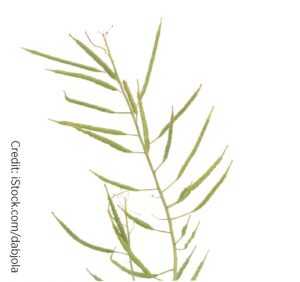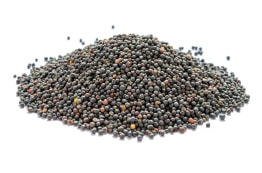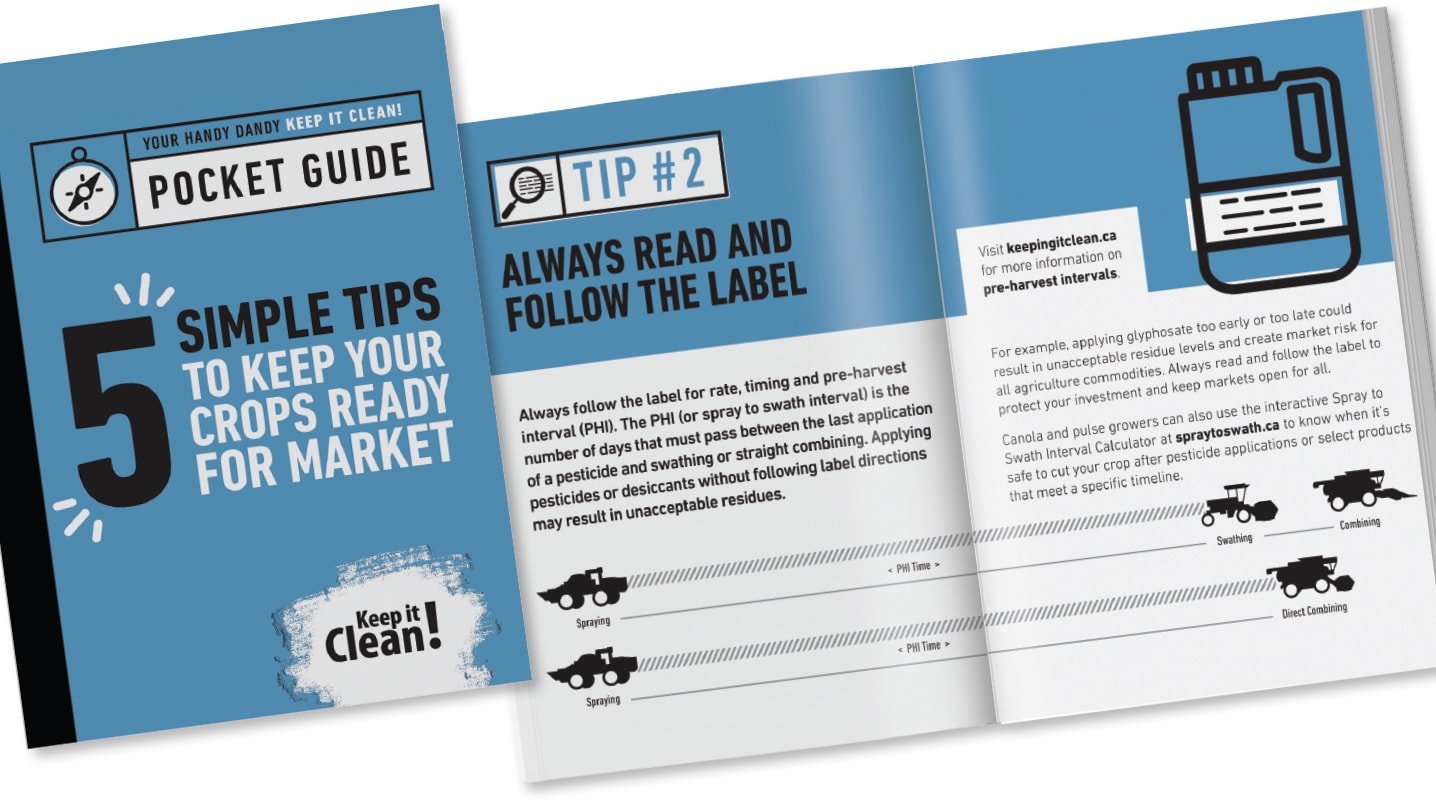Understanding MRLs and PHIs to Keep it Clean!
You work hard to grow crops to the highest standard. Keep it Clean! can help by providing timely updates and simple tips you can use to help keep your crops ready for market – crops that won’t cause any trade concerns due to unacceptable residues.
You may have heard the acronyms MRL and PHI. These are two terms that frequently come up when talking about growing a market-ready crop.
What is an MRL?
MRL stands for “maximum residue limit.” This refers to the maximum amount of pesticide residue that is expected to remain on harvested grain when the pesticide is used according to label directions.
Our domestic processors, grain buyers and export customers are increasingly testing shipments for residues with highly sensitive equipment, detecting levels as low as parts per billion and in some cases parts per trillion. If a shipment is turned back because of unacceptable residues, it could result in millions of dollars of lost revenue and damage to Canada’s reputation for consistency and quality.
The Canola Council, Cereals Canada and Pulse Canada continuously monitor potential risks surrounding MRLs in major export markets. These guidelines are communicated to growers and ag retailers through the Keep it Clean! website, social media and farm publications.
As guidelines may change, visit keepingitclean.ca and check with your grain buyer to get the most up-to-date information before applying any crop protection product.
A common misconception is that the MRL is a safe consumption limit. In fact, MRLs are set much lower than what is safe for consumption. While it is true that safety testing is the first step in determining an MRL, the safety margin for an MRL is often 100s of times higher than a level where risk could occur.
What is a PHI?
A pre-harvest interval, or PHI, is the minimum number of days that must pass between spraying pesticides or desiccants and swathing or straight-cutting the crop to ensure the active ingredient has enough time to break down in the plant and not leave unacceptable residues behind.
It’s important to remember that the pre-harvest interval is based on when the crop is cut, whether that’s through swathing or straight combining. And, if more than one product is sprayed, you must observe the longest PHI indicated. If the crop is harvested too soon, too much residue may remain on the harvested grain, which could put the crop’s marketability at risk.
 Always read the label to verify the PHI before spraying; complying is not just a good practice, it’s a legal requirement. To help make crop protection product decisions that fit a specific timeline, or to check PHI information on-the-go, try the interactive Keep it Clean! Spray-to-Swath tool at spraytoswath.ca.
Always read the label to verify the PHI before spraying; complying is not just a good practice, it’s a legal requirement. To help make crop protection product decisions that fit a specific timeline, or to check PHI information on-the-go, try the interactive Keep it Clean! Spray-to-Swath tool at spraytoswath.ca.
How can I Keep it Clean?
As a grower, you play an important role in protecting valuable markets and maintaining Canada’s global reputation as a supplier of high-quality canola. You can ensure your harvested grain stays ready for market by following these Keep it Clean! best practices:
1. Make sure that the products you are applying are registered for use on your crop and won’t create trade concerns. Check with your grain buyer before spraying to ensure the products you plan to use are acceptable to domestic and export customers.
Pre-harvest glyphosate should only be applied once seed moisture is less than 30 per cent in the least mature areas of the crop. Applications made before the correct stage increase the risk of unacceptable residue in the seed. Check the visual staging guide at keepingitclean.ca/glyphosate.
2. Always read and follow the label for rate of application, timing and PHI. Applying a crop protection product at a higher rate or before the crop has reached maturity can result in unacceptable residue levels in the harvest seed.
3. Grow disease-resistant varieties and use practices that reduce infection. Blackleg in canola can cause yield and quality losses, impact profitability and may create a market risk. To protect your investment and the marketability of your crop, plant only varieties that are rated R (resistant) or MR (moderately resistant) and rotate varieties to bring a mix of blackleg resistance genes to your field over time. Maintain a break between canola crops to allow crop residue to decompose – two to three years is recommended if blackleg becomes established – and be sure to control volunteer canola and other Brassica weeds during non-canola years.
 4. Keep canola bins malathion free. Never use malathion to treat canola seed prior to storage and do not store canola in bins that were treated with malathion in the current growing season. Malathion can transfer to the seed, making it unacceptable for export.
4. Keep canola bins malathion free. Never use malathion to treat canola seed prior to storage and do not store canola in bins that were treated with malathion in the current growing season. Malathion can transfer to the seed, making it unacceptable for export.
5. Deliver what you declare. By signing the Declaration of Eligibility affidavit, you are making a legal assertation that your crop is the variety and/or class you have designated. It also states whether your grain may contain residues of any crop input product specified in the Declaration.
Is your canola on the “No-Grow” list? Seeding de-registered varieties can create market risk for Canadian canola exports. Visit keepingitclean.ca/canola for the full list of de-registered varieties over the past 20 years.
Why Keep it Clean?
We all benefit when we have stable and open trade. From seed selection to delivery, the choices you make along the way can impact market access for Canadian canola, cereals and pulses. That’s why it’s vital to keep market-readiness top of mind at every step in the growing season.
If you have any questions about MRLs, PHI or any of the best practices discussed here, please reach out to your Canola Council agronomy specialist and be sure to visit keepingitclean.ca for the latest updates on market access and MRLs for canola, cereals and pulses.
We are all in this together – let’s all do our part to Keep it Clean!





